Going to the wall in Solana Beach
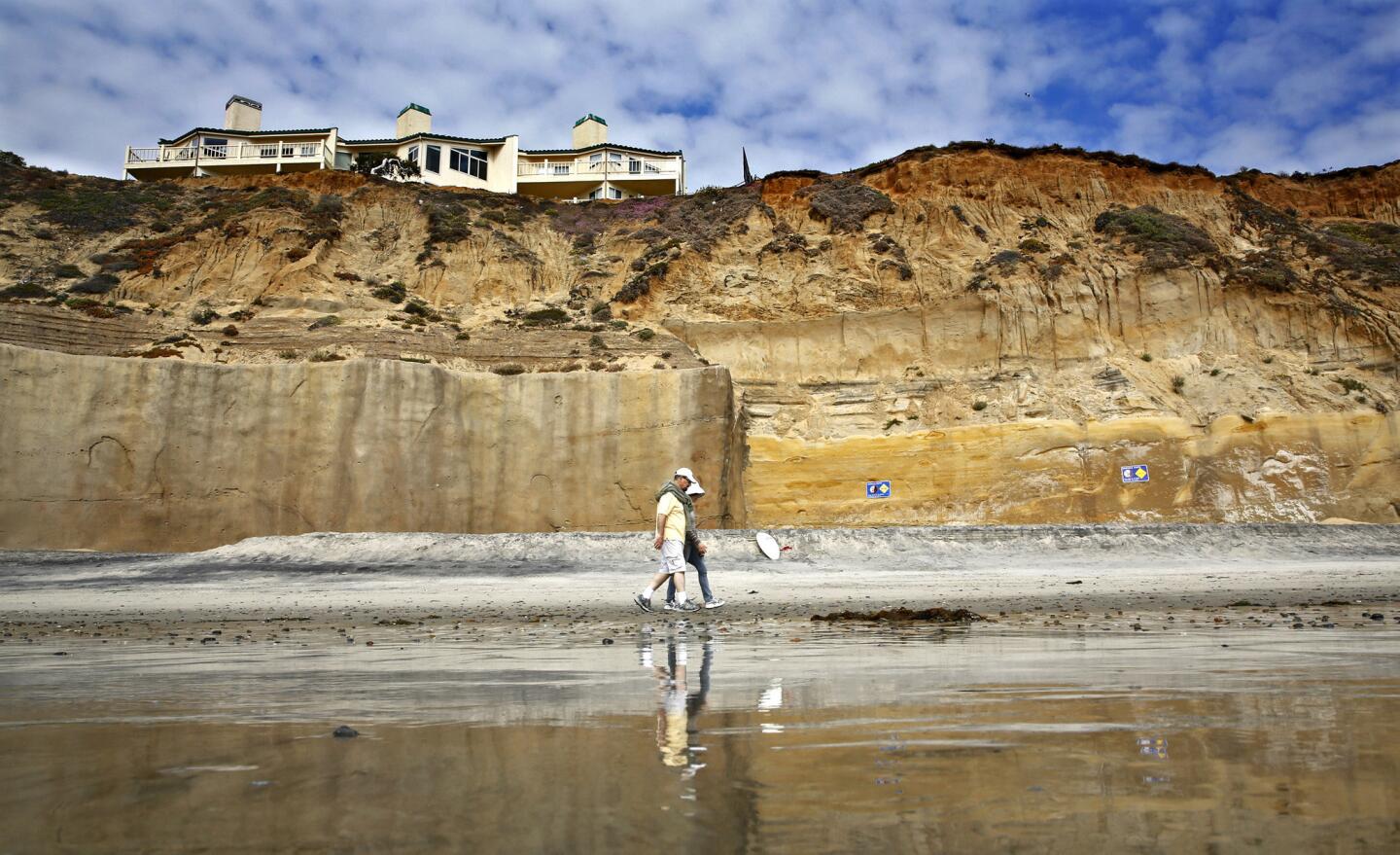
A couple walks on along the beach at low tide in Solana Beach, past a reinforced, 40-foot-high concrete sea wall below the condominiums on South Sierra Avenue. Homeowners say the sea walls are the only way to protect their properties. They are suing over a city decision on sea wall permits. (Don Bartletti / Los Angeles Times)
For more than three decades, controversy has surrounded the proliferation of privately built seawalls meant to protect bluff top homeowners along the city’s approximately 1.7 miles of oceanfront.
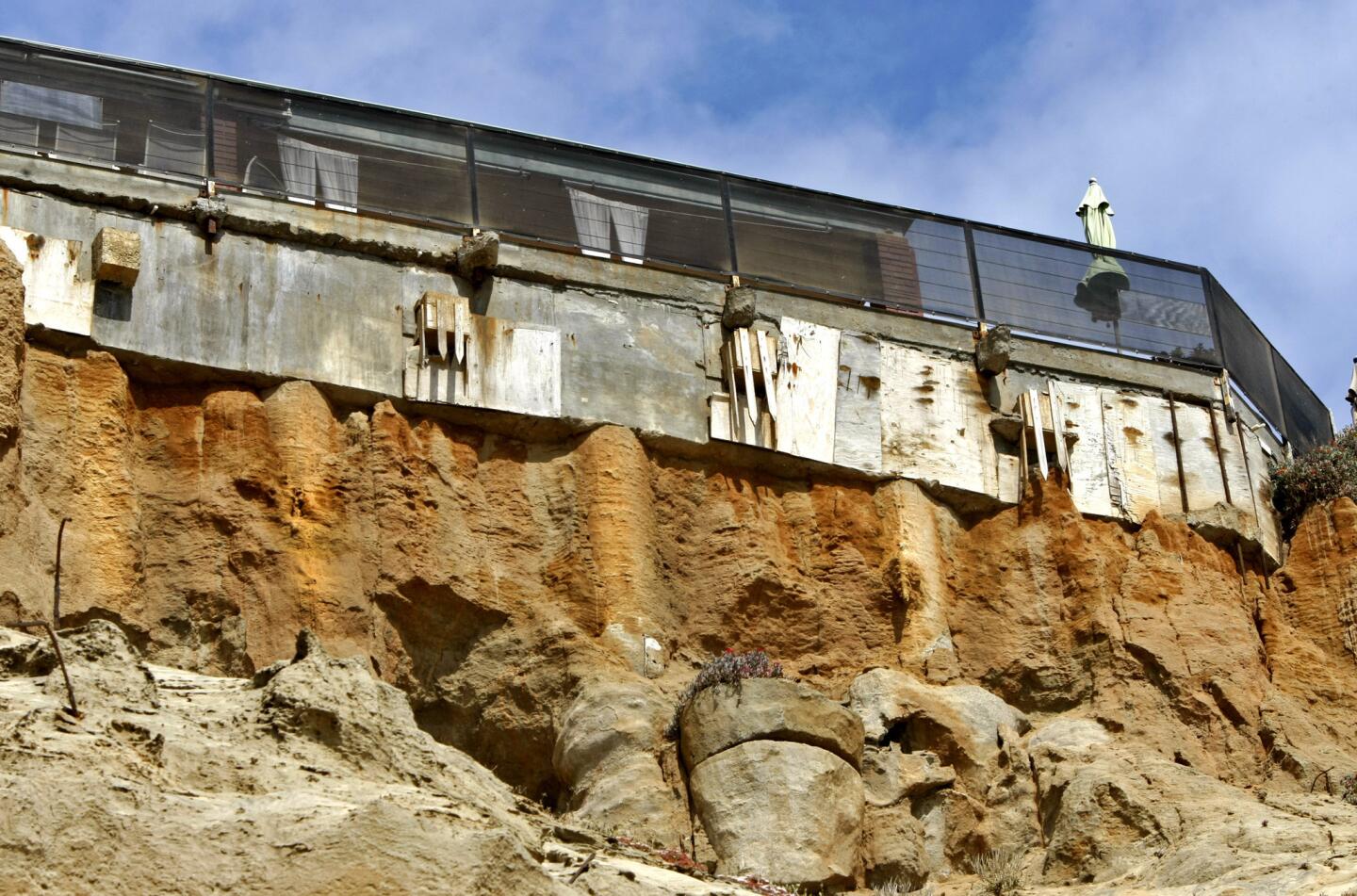
The cliff behind a house on Pacific Avenue in Solana Beach collapsed several years ago, dropping the patio and backyard to the beach 40 feet below. (Don Bartletti / Los Angeles Times)
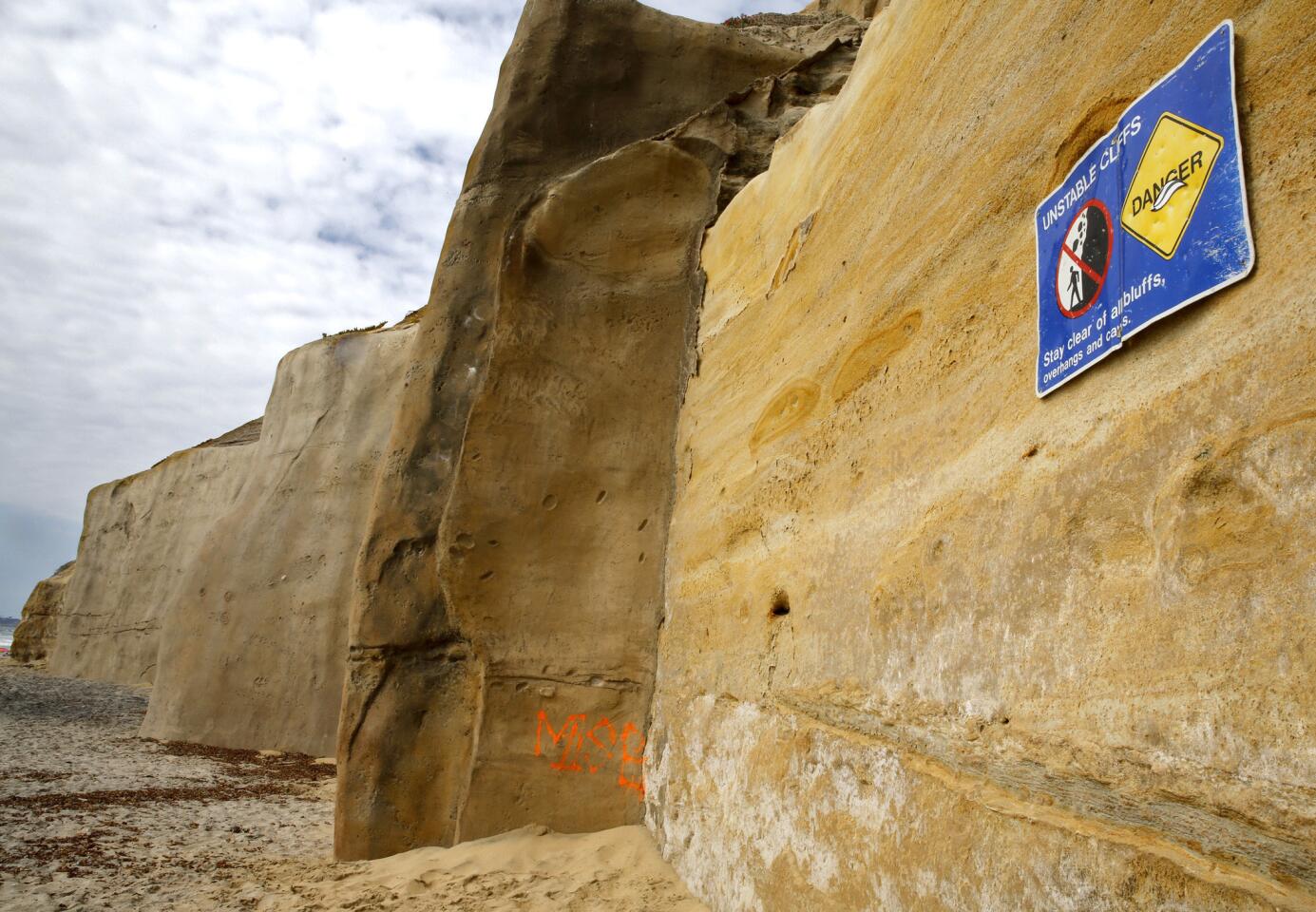
A sign affixed to the natural Torrey sandstone cliff in Solana Beach warns of potential collapse. The bluff on the left side of this view is faced with a thick concrete sea wall designed to protect condos high above from erosion. (Don Bartletti / Los Angeles Times)
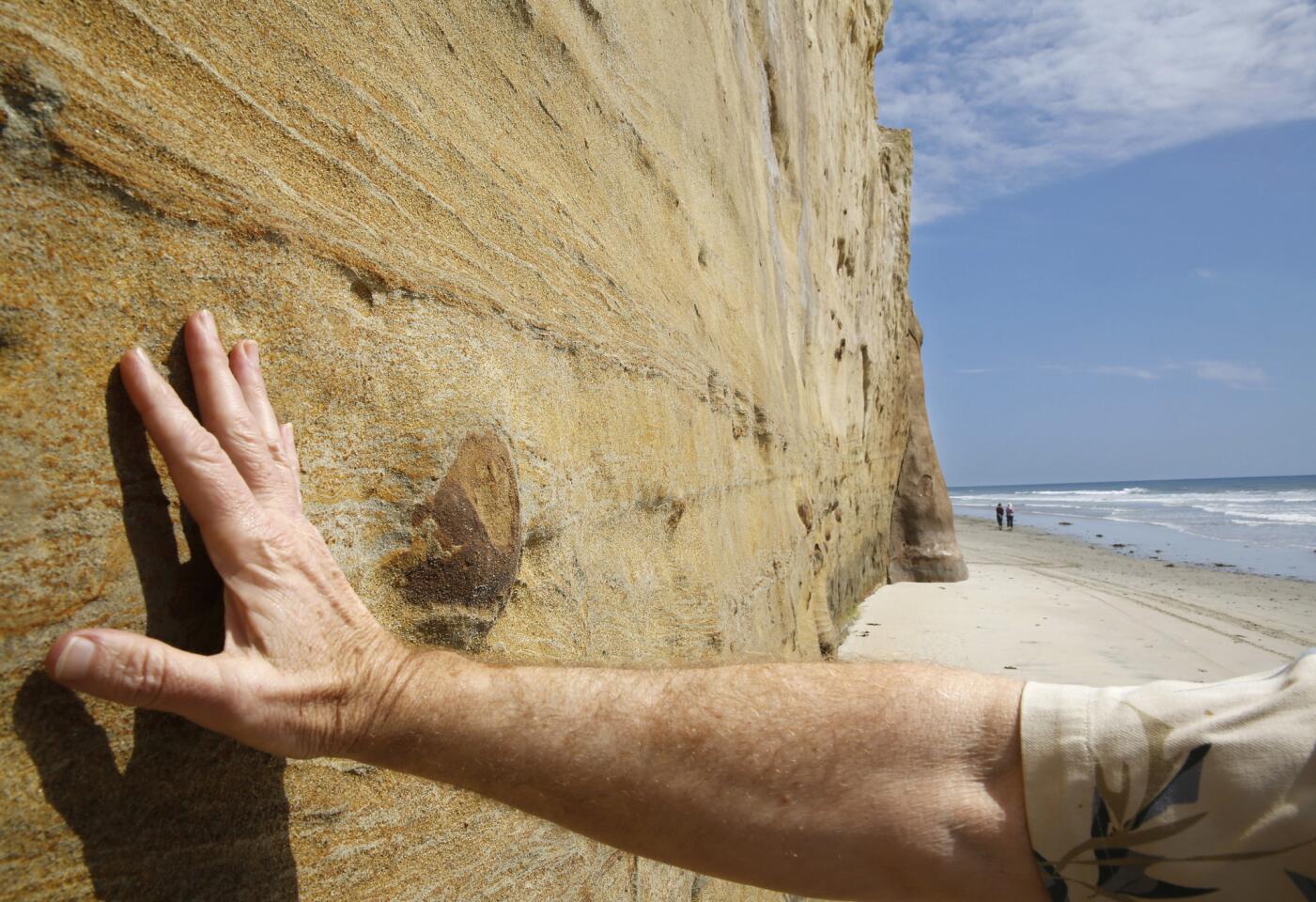
Chris Hamilton, chairman of the Solana Beach-based Beach & Bluff Conservancy, touches a Torrey sandstone cliff that appears to be solid and stable all the way down to the beach level. Elsewhere along the beach, cliffs have eroded and collapsed, prompting the construction of privately funded concrete walls by cliff-top homeowners. (Don Bartletti / Los Angeles Times)
Advertisement
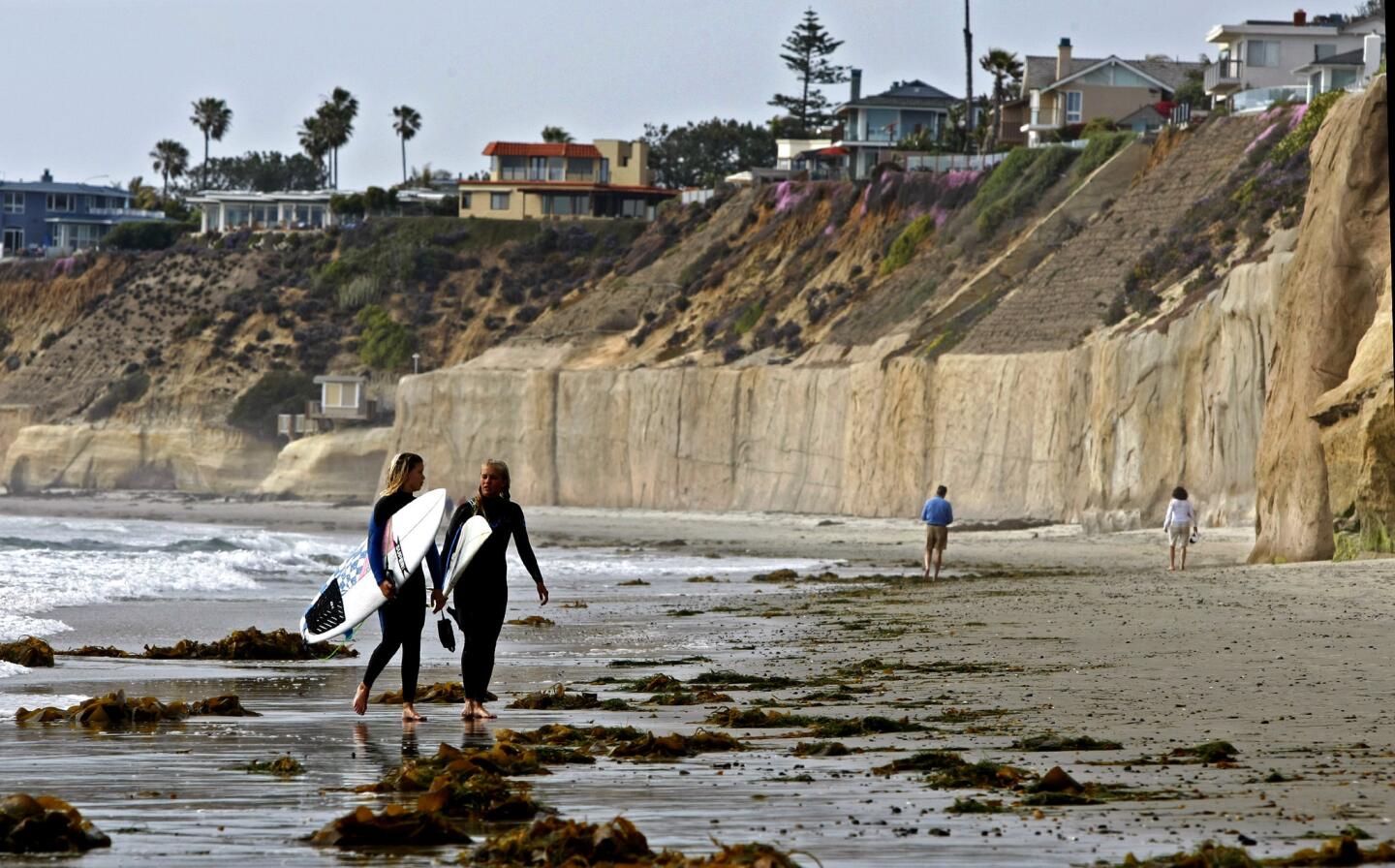
Surfers carry their boards at Fletcher Cove beach. At the level of the beach, most of the Solana Beach bluff is sandstone. Higher up, the bluff has a layer of sand that is susceptible to erosion. Without the sea walls, that sand would tumble onto the beach, providing a kind of natural barrier to the waves and increasing the width of the beach. But property owners say that without the walls, their homes would be imperiled. (Don Bartletti / Los Angeles Times)
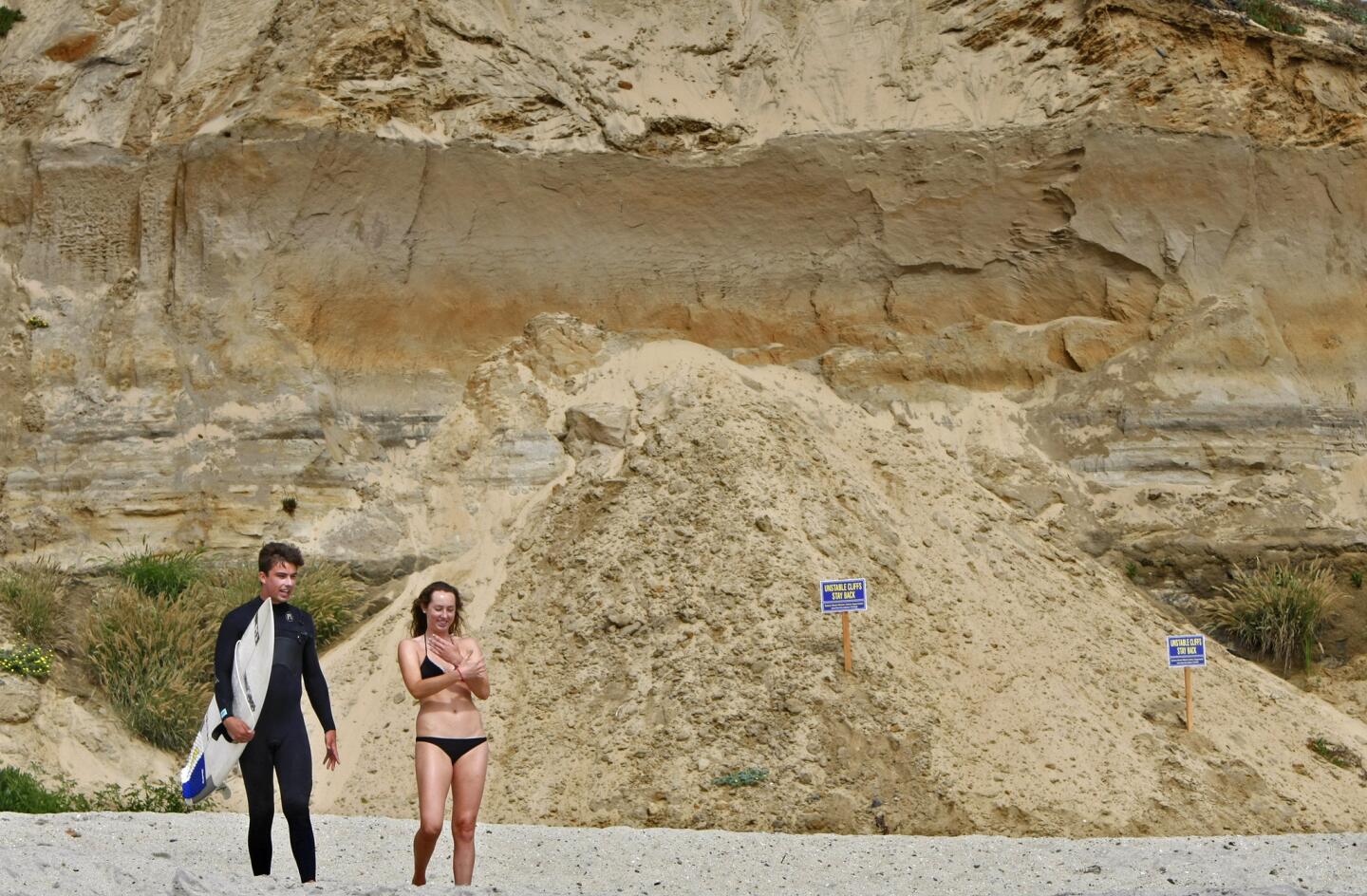
Brother and sister John and Claire Manhard head for the surf. Behind them is a recent cliff failure posted with warning signs. Breakoffs of the sandstone bluffs is a natural occurrence but homeowners have put up sea walls to protect their cliff-top properties. The city is considering amendments to a land-use plan that requires permits for new or altered sea walls to expire after 20 years. (Don Bartletti / Los Angeles Times)
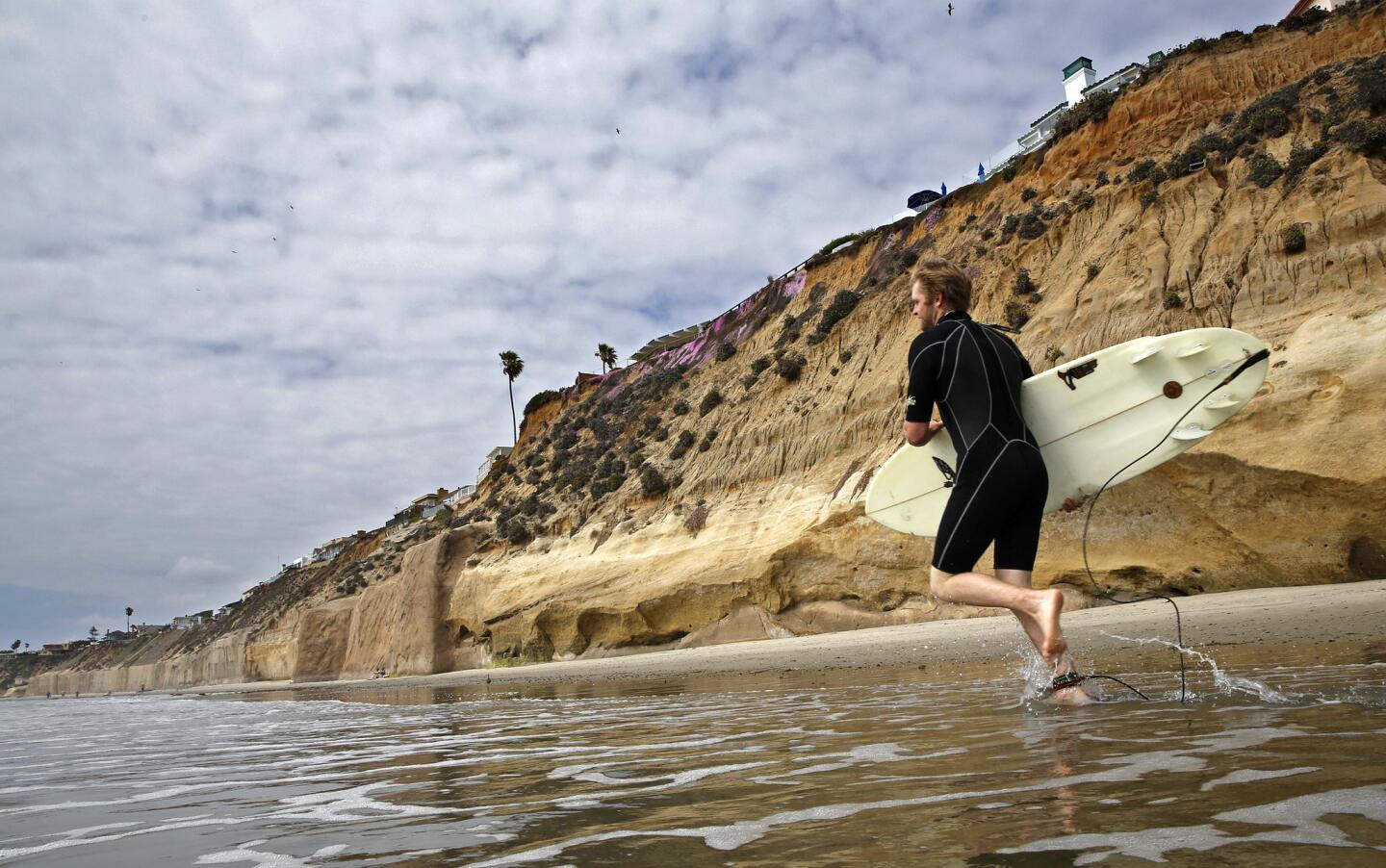
A surfer runs along Fletcher Cove beach. The sandstone cliff to the right is natural and shows some erosion at the base. The cliff on the left is lined with a 40-foot-high sea wall. “We call it Solana Wall, not Solana Beach, because it’s been so armored,” said Julia Chunn-Heer, beach-preservation coordinator for the Surfrider Foundation, which argues that the beach belongs to everyone, not just those who can afford a front-row seat. (Don Bartletti / Los Angeles Times)
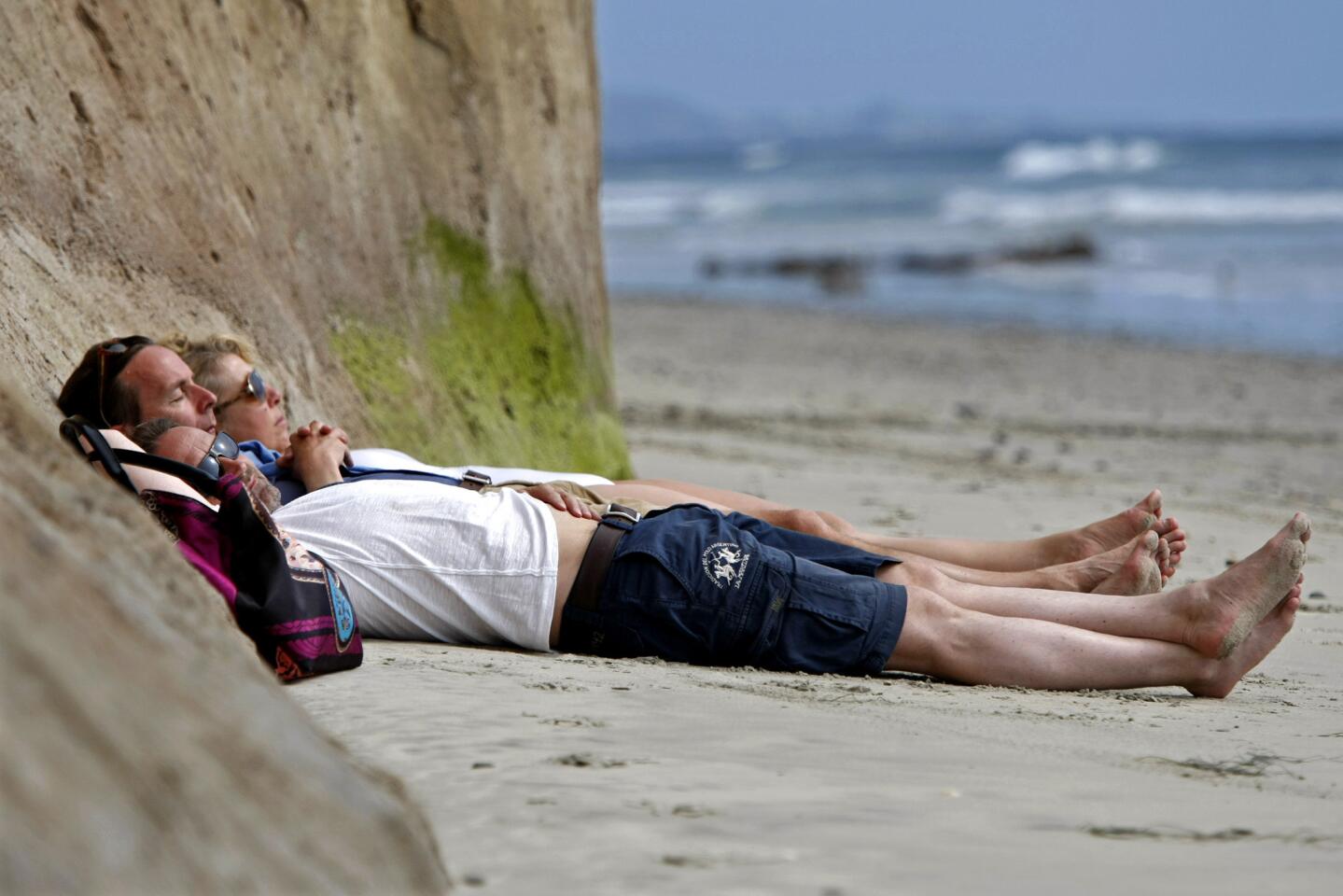
Vacationers soak up the sun as they recline against the base of a concrete sea wall. (Don Bartletti / Los Angeles Times)
Advertisement
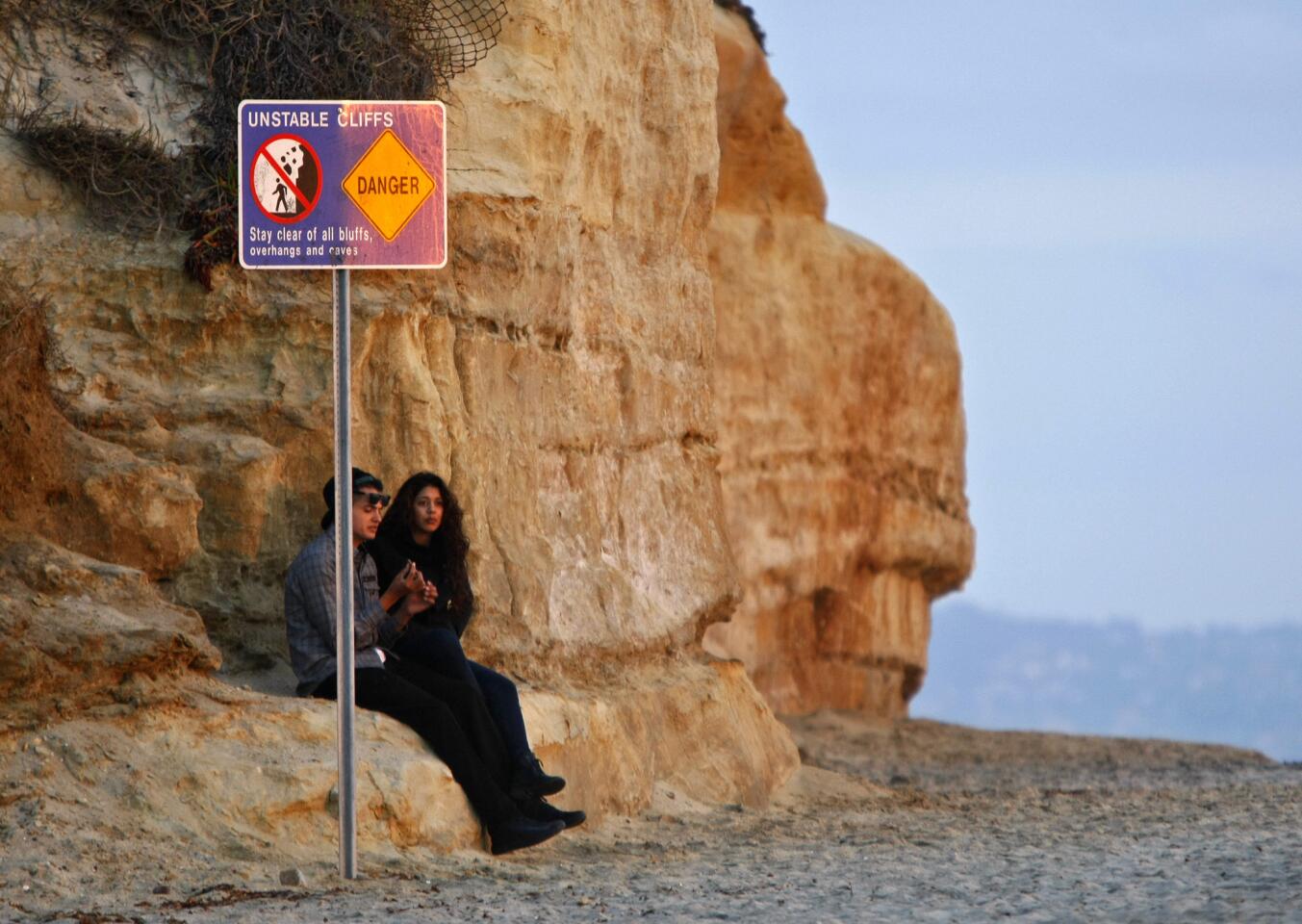
A couple watches the sunset at Fletcher Cove, where a sign warns of unstable cliffs. (Don Bartletti / Los Angeles Times)
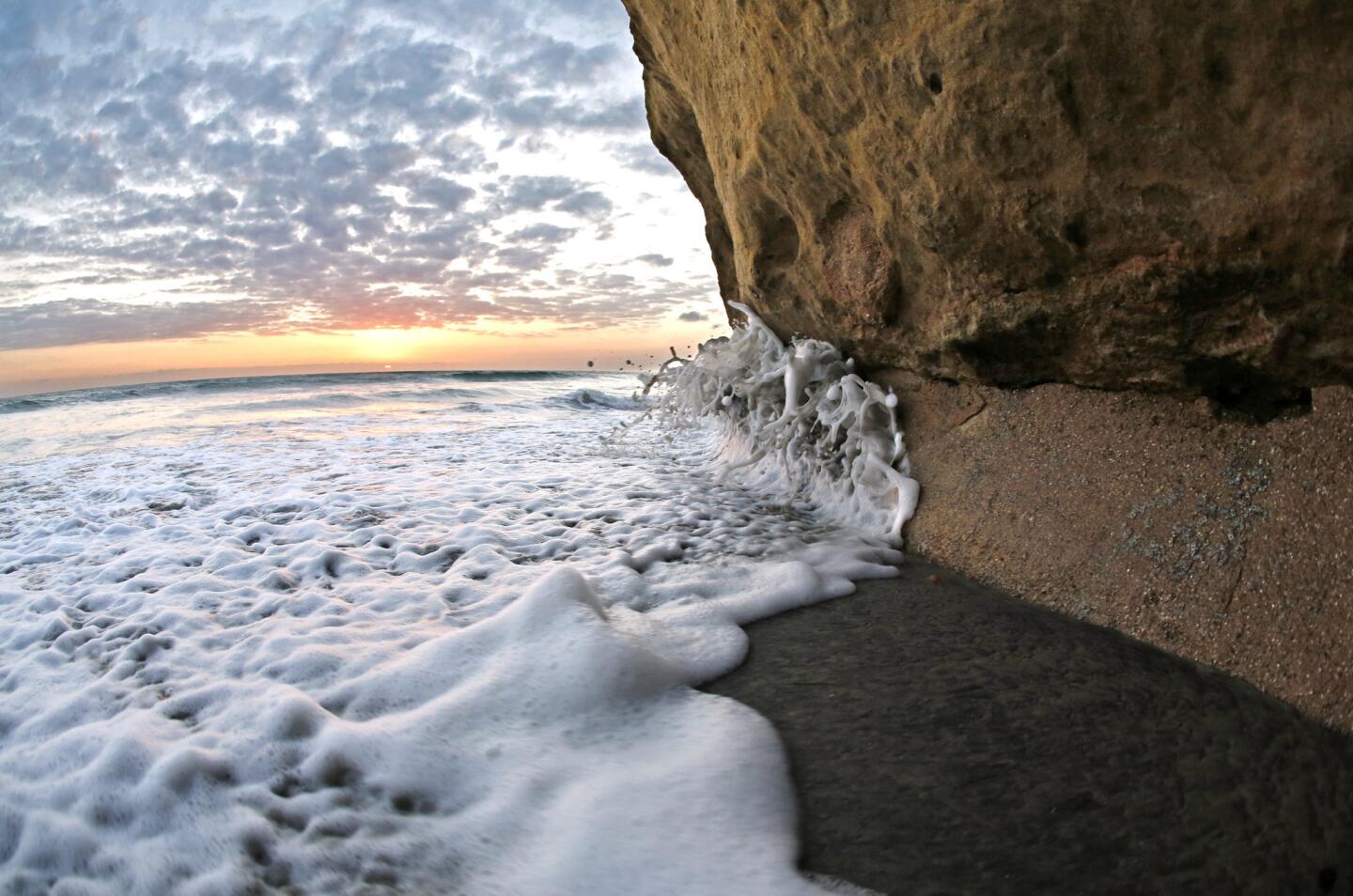
As the sun sets, the rising tide begins to lap against the base of a sandstone cliff in Solana Beach. Stone-colored concrete has been added to fill in the eroded base. (Don Bartletti / Los Angeles Times)







